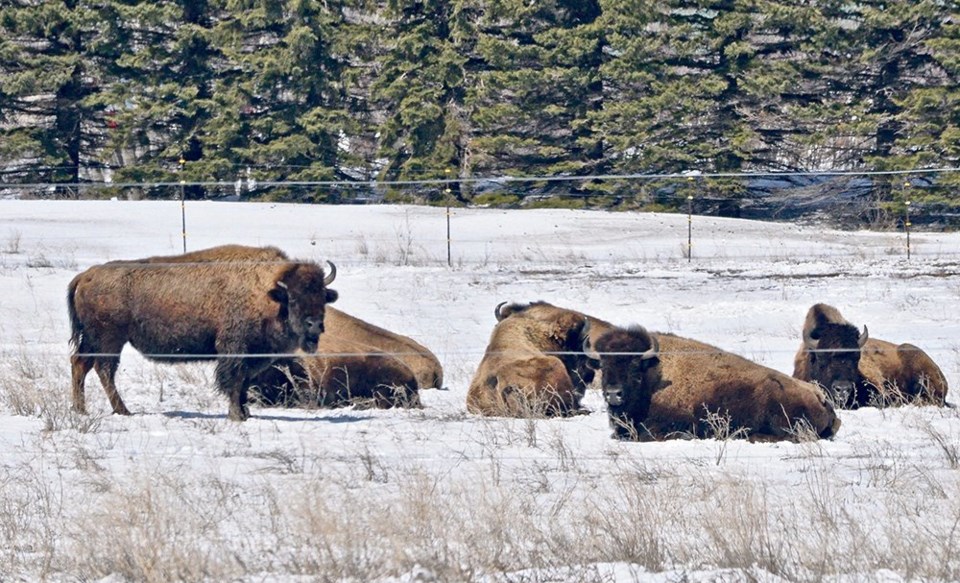WESTERN PRODUCER —Bison ranchers won’t know till autumn how hard they were hit by the recent string of severe storms on the eastern Prairies.
The bison cow is tougher than a beef cow, but the storms hit in the midst of calving season, and it isn’t always easy to tell how many cows have aborted or have successfully brought forth a calf.
“We won’t really know until fall roundup and end of the year when we start weaning,” said Robert Johnson, a Fairlight, Sask., bison rancher and president of the Manitoba Bison Association.
It’s harder to know how many newborn bison calves were lost to the storms that hit in late April and May than it is for cattle. Bison live out on the range and are generally widely dispersed, so death losses can be hard to spot.
It’s hard to tell if bison cows have miscarried or just failed to conceive. Whatever isn’t spotted quickly is generally cleaned up by scavengers soon after death,
Fortunately for many bison producers, the main calving this spring was delayed by the “heat dome” conditions that hit much of the Prairies last summer. Producers tend to put out their bulls in July and the rut occurs through July and August, but the harsh heat pushed much of the season into the later stages of the summer.
Before the first storm, Johnson only had one calf born. Five more came before the second. However, with a 530-cow herd, that is few compared to a normal year.
“The rut was really delayed,” said Johnson.
“That’s maybe why we’re seeing this calving season rolled back a bit.”
Producers are still worried about seeing disappointing results, but that’s mostly due to last summer’s brutal drought.
Pastures were cooked and forage production ravaged, forcing producers to search for supplemental feed to get their animals through the winter. The poor nutrition many cows faced during the summer, fall and winter probably hurt fertility.
“We’re probably looking at a smaller calf crop hitting the ground here,” said Johnson.
The moisture that has bathed the eastern Prairies in the last month is more of a blessing than a curse for most bison producers. They’re keen to get their animals into green grass, which should come quickly with enough heat now that soil moisture is adequate. Many can’t afford to wait long.
“I’ve spoken to people who were down to their last dozen bales,” said Johnson.
“Right now, they don’t have leftover grass (from last year) and that pantry is kind of bare.”
Many dried-up sloughs and dugouts have refilled, which is a relief. As long as the grass comes soon, the calves should face pleasant conditions.
Ranchers are looking forward to seeing the newborn calves springing forth into a greener world than their mothers faced last summer.

